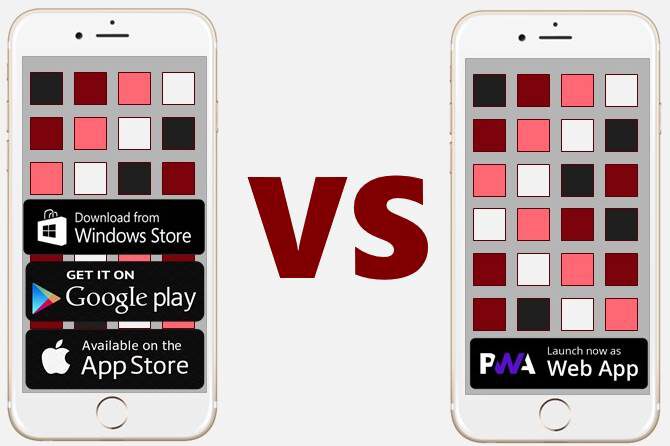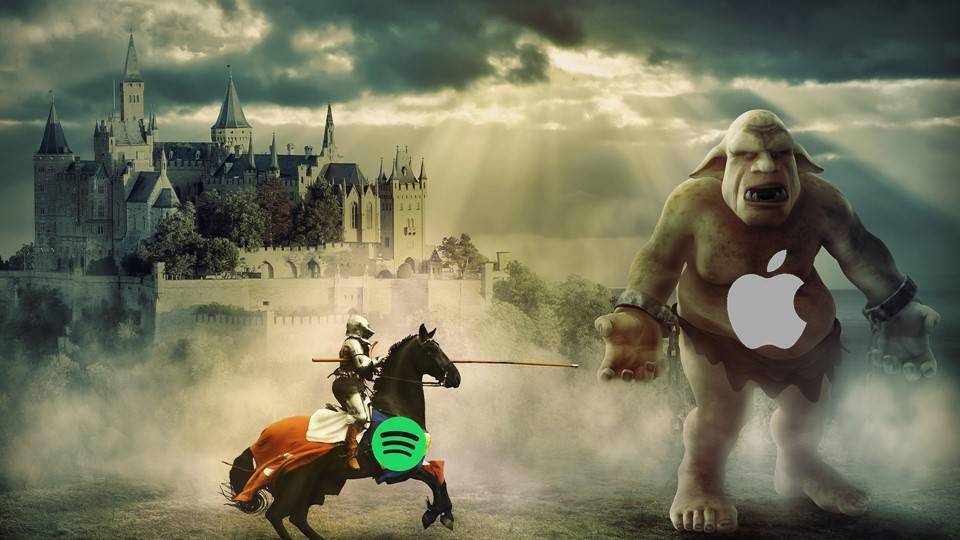What are Progressive Web Application Push Notifications?

Have you tried Progressive Web App (PWA) push notifications as a digital communications communication channel with your customers?
No?
Maybe it is because you do not have a mobile app, which for the longest time was how consumers could subscribe to push notifications.
Progressive Web Applications (PWA) make native push notifications available to any website using a service worker on just about every platform and browser.
The power of web app push notifications is being able to engage customers without a native app. You can leverage the advantages of a PWA over native apps to grow your business.
Apple is the lone holdout at this point. Which is ironic since they introduced push notifications to the world in 2009. Even though you currently cannot use native iPhone push notifications, SMS is a viable fallback.
But that should change in the future as they feel market pressure build toward progressive web apps and native push notifications via service workers.
Push notifications are CMS or server platform agnostic. So, they will work with sites based on WordPress, Magento, Shopify, etc. They are also decoupled from any front-end JavaScript framework.
You will need a push management service and of course client-side code to manage subscriptions and a service worker to display messages.
Even better push messaging is a low cost, high engagement channel. Push consistently out performs email and other marketing channels, with higher returns on investment.
Notifications are a great marketing tool for businesses because they help you stay in contact with your users.
Push notifications are a messages sent from a server to a subscribed client. They are passed in the background and do not require the user to be active on your website or even have the browser open.
When a device receives a push notification a toast or message window is displayed. If the user is not active on their phone Android will display the notification on their lock screen.
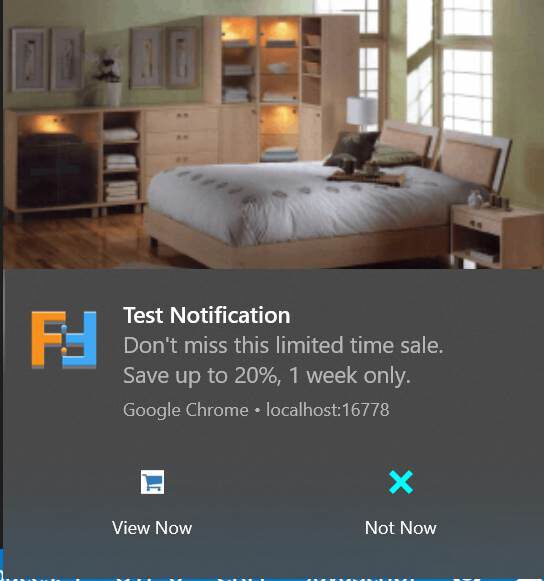
While push is similar to SMS and email but there are some key differences I will review below.
Push notifications are a low-cost messaging channel with proven high engagement rates and low friction for consumers to manage subscriptions.
Just don't abuse the channel or you will be sure to lose valuable subscribers.
- What are Push Notifications?
- The Business Case for Push Notifications
- A Quick Introduction to How Push Notifications Work in Web Applications
- How Push Notifications Differ From Text (SMS) Messages
- Push Notifications Engagement vs Alternatives
- Push Notification Best Practices
- What Browsers and Platforms Support Push Notifications?
- Business Recommendations
What are Push Notifications?
Push notifications is a technology communication channel that allows brands to send messages or nudges to engaged customers even when they are not actively in the website.
It does not matter if the customer is actively using the device or not, subscribed messages will be delivered. The user can chose to read or dismiss them at their leisure.
Unlike SMS or email messages there is not an application needed to read and reply to messages. Instead they are part of the overall operating experience. Your push message will be listed along with other applications' push messages.
Push messages are a one way messaging channel. Users cannot directly reply to a push message. Instead you want to guide them to a targeted landing page. Think about it as a way to direct a customer to an intentional call to action.
Push notifications can be sent to both mobile phones and desktop. That's because most browsers support native push notifications on all platforms.
The lone hold out again is Apple on iPhones and iPads.
The Business Case for Push Notifications
When a customer or visitor enables your push notifications you have an opportunity to send them messages at your discretion.
Now you can immediately send them a message when you have a new coupon, discount or promotional offer.
But it gets better, you can do more than just send promotions, you can send valuable information or encourage them to read your latest content or watch a new video.
Another idea is to send a content sequence to educate about your products or services.
Basically, anything you might have traditionally sent an email to communicate information can be done via a push notification with a call to action that drives them back to your site.
From there you can kick in additional steps in your sales funnel.
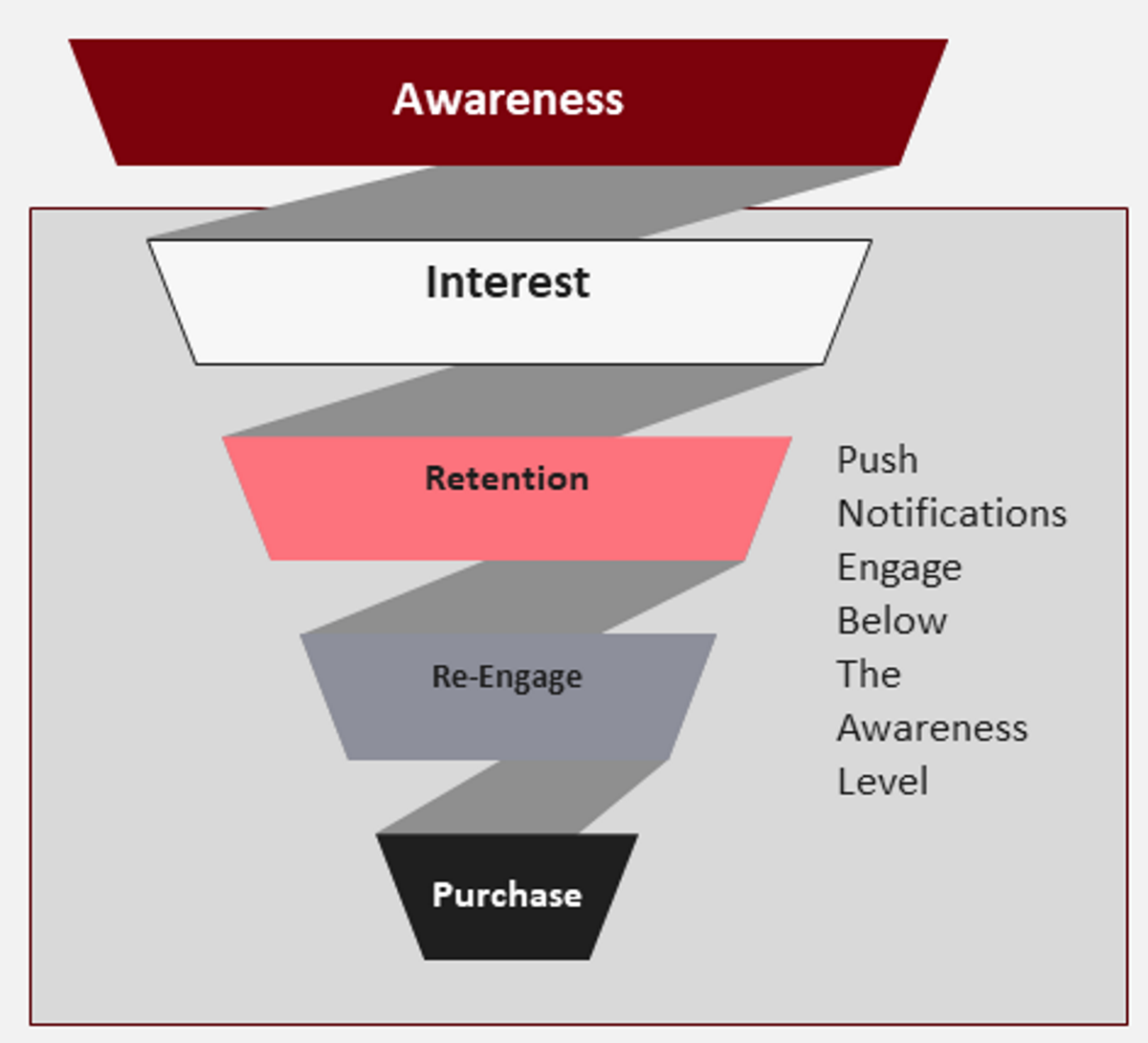
Do you have an abandoned cart problem? A subscribed user can be nudged a little to finish their order!
So let's look at some rules for maximizing engagement rates.
Notifications from any channel are interruptions to a user’s focus. Too many or inconvenient interruptions run the risk of alienating subscribers by overloading them with irrelevant content.
Don't overuse push notifications to avoid a negative impact on your overall engagement. A strategy that bombards readers may generate an initial spike in traffic, but this comes at the cost of the reader experience.
In fact for most verticals users get fatigued when more than 2 messages are sent per week. But this can vary by demographics. Even millennials don't like getting pestered.
A general rule is be kind to your subscribers.
You need to realize there is a truth about message subscriptions:
All readers will stop engaging with your notifications, at some point.
On average, the CTR decreases by a factor 0.4 from week one to week five. That is if the CTR is 1% at week one, in week five it is at 0.4%.
Eventually a subscriber will ignore messages and eventually unsubscribe.
I know I have turned off messages from different social media services. They were so annoying, especially Facebook.
This is why a good notification service will allow you to not only track engagements, but also build some intellegence into your service.
I like to think of this as pumping the breaks. When a subscriber has not engaged with notifications over a period of time, I like to mute them for a period of time or slow down messages.
If done properly this can increase their engagement with future messages. In a way infrequent messages can seem more important to the subscriber.
There are many situations you may need to manage. What happens when a consumer unchecks the subscribe button and then checks it again?
Do you run them through your onboarding sequence again?
Hopefully not, but it can reset their message frequency, which may not be desireable. This is why you need additional tracking beyond just the subscription object supplied by the browser.
For most businesses I suggest keeping their strategy simple until they get a handle on how push notifications work and how their audience reacts.
A Quick Introduction to How Push Notifications Work in Web Applications
Push notifications are enabled by service workers. This means your website needs to register a service worker before push is enabled.
If you are not familiar with service workers this is the key technology powering progressive web applications. Each site can register a service worker, which runs in a background process.
It is this background process model that empowers service workers to be able to receive and display push notifications, even when the user is not actively using their device or when the browser is closed.
The technical details are a bit complex as to how to implement push notifications in a web browser. So I will defer that to another article.
Before you can send notifications to a customer or lead you need their permission. You may be seeing requests to send you notifications on many sites.
This is because you, the visitor needs to agree to let the site send you push notifications first.
When you agree to push notifications the site is given a subscription object, which it needs to manage. What happens is all invisible to the user. The subscription data should be sent to the server or cloud to be managed by the site.
Once you get permission you can then send notifications. The subscription object contains some encrypted, anonymous information you will need to send to the device's notification service.
Your system can send a message, which is a string, but is typically a JSON formatted piece of data the service worker will consume and display the desired message.
Don't worry if you are not technical, a good push service will abstract the geeky stuff away. You will only need to manage your messages, schedules and triggers. Hopefully this will be done through a non-tech friendly administration interface.
How Push Notifications Differ From Text (SMS) Messages
The two message types appear similar on a user's lock screen and both have similar response rates. They differ in how you can convey information, banding and actions.
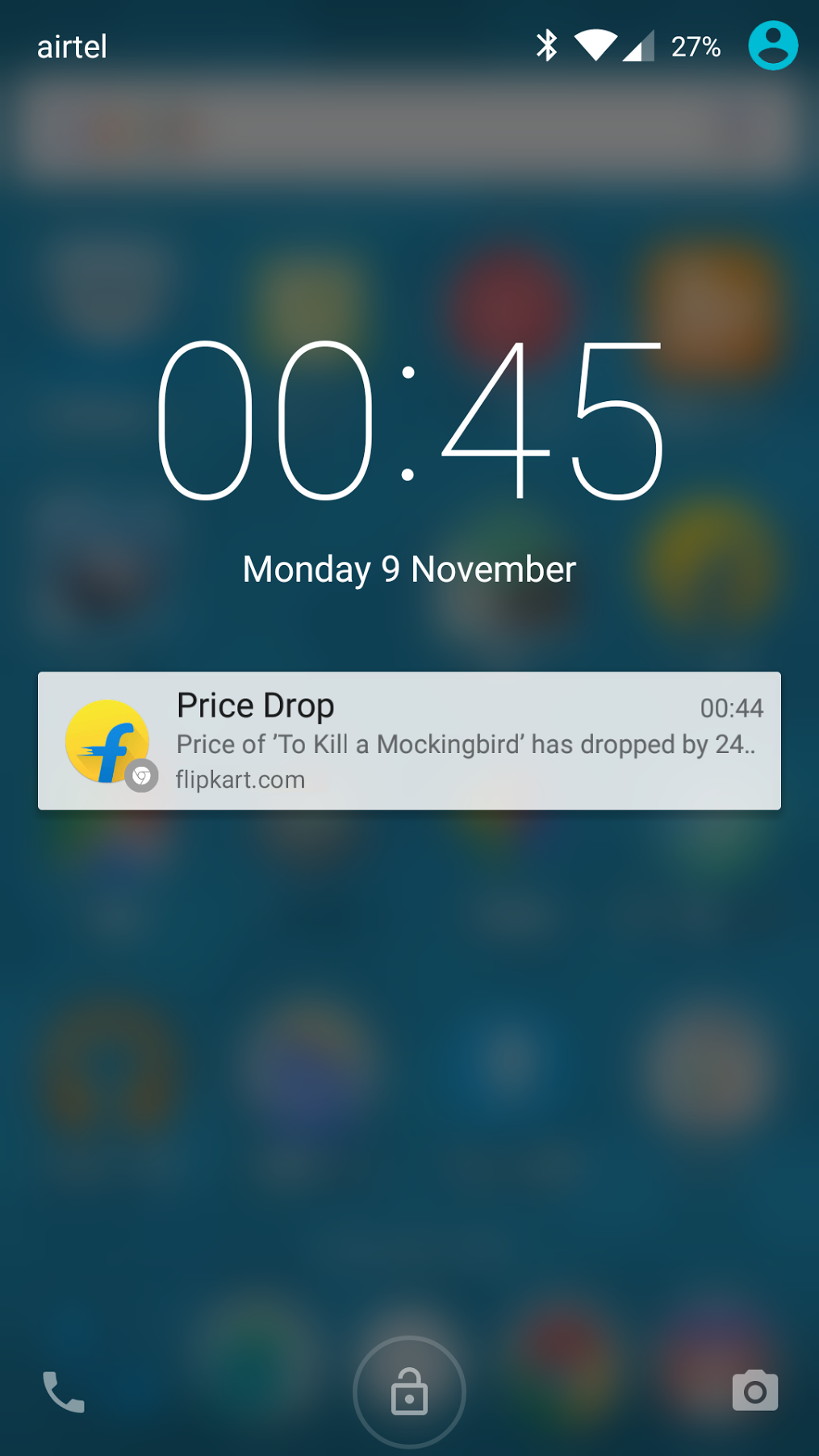
Both mediums display messages almost instantaneously, assuming the consumer's device is connected to the Internet. Both will sync or transmit when they come back online.
Text messages are just that, plain text. You can include a call to action, like a link to a promotion or your latest blog post. But you generally do not attach imagery or more than one option.
A push notification can include more than just text, you can also reference a product or promotional image. You can also add a one or two call to action buttons.
While there are some tools that allow you to text a desktop, this is rare. Push notifications can be sent to any device your customer has subscribed. This is typically their phone, but progressive web applications make it possible to push messages to desktops as well.
One big difference between the two channels is cost. SMS messages cost more to send and may trigger usage fees for your customer. Push notifications have no charge associated with the platform for either the sender or the consumer.
Both forms of messaging do require management for businesses, which is what messaging services charge.
The other current difference between the two channels is Apple. Right now web based push notifications (subscribed from your progressive web app) are not supported by Apple. They are the only platform that does not support native push notifications.
As a fallback, or polyfill in geek terms, SMS provides a viable alternative.
When Apple enables native push notifications any site supporting push should be able to implement them without code changes, assuming your code is properly designed.
While the two channels are similar, they do have a few differences. We offer both communication channels as a standalone service and integrated with our web solutions.
A best practice is to let your visitors decide what channel they would like to receive notifications. They might want both, you never know.
Push Notifications Engagement vs Alternatives
Today there are several direct messaging channels consumers can subscribe or interact. These include native push notifications, SMS/Text messaging, email and chatbots.
Since I am covering push in detail in this article I will focus on the other channels for a few paragraphs.
SMS Text Messaging
Very similar to push notifications SMS or text messages allow you to send a short message to the subscriber. You are typically limited to about 160 characters, but today many platforms will combine longer messages.
You can attach media, like images or video, but this typically costs extra.
Speaking of cost, SMS messaging can be expensive for you and your customer.
Today most phone plans include unlimited text messaging, but many consumers still have plans with limited messaging and are often charged $0.10 or more per message.
Services, like ours, also charge a little more for SMS messaging than push notifications. This is because it cost a little more to send these messages than push.
Both channels have similar management infrastructure, the services are billed differently for message transport.
SMS, like push, has a very high engagement history and can serve as a fallback for platforms, like Apple, that do not support native push notifications yet.
You can do both push notifications with an SMS fallback in the case of Apple or customers that do not want to receive push notifications.
EMail Marketing
The king of direct modern marketing, email marketing has been used since the Internet became mainstream. That may also be its Achilles heel.
If you are like me I get about 100-300 emails a day from a automated subscriptions and newsletters. Many I signed up for years ago and cannot unsubscribe.
The engagement rates for email is relatively low.
Messages take a while to create, if you want them to stand out.
Email services like ConvertKit, MailChimp and AWeber start at $30/month and increase. There are some free plans to help you start out, but once you have more than a few thousand subscribers, and you will need thousands of subscribers to see tangible engagement, the costs quickly add up.
On top of that you have to be careful to stay out of junk message folders or have your server blocked all together.
Since many consumers use GMail as their service and email client, most subscription message wind up in the promotions tab, which is often ignored.
These are just some of the reasons why email marketing is seeing diminishing returns.
It still works, just not as well as it used to.
Chatbots
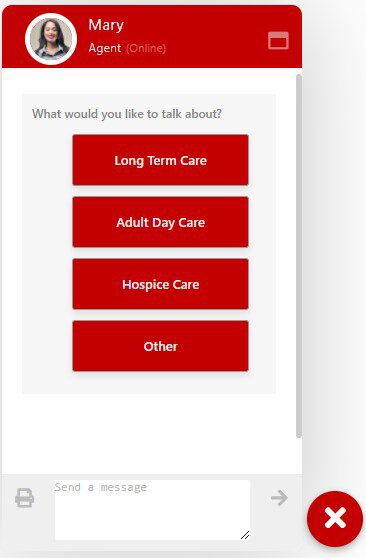
This is another relatively new communication channel. The popularity and accessibility of artificial intelligence has make chatbots affordable for most businesses.
The challenge they present is training the chatbot engine to provide proper answer to questions. The consumer also needs to be on your website or engaged through another platform, like Facebook.
Engagement rates for chatbots seem to be good.
There are two types of chatbots I see used, artificial intelligence driven and a live person.
The problem with the later is it requires a dedicated employee to answer questions and is only available while they are available.
Artificial intelligence can work for your 24/7, but require structured training by you or your staff. They also require a limited vocabulary to be used by your clients, otherwise they may not understand how to answer inquiries.
Pricing for many services tends to be on the high side today. But that can change as the service becomes more commoditized.
Push Notification Best Practices
The first rule for successful push notifications is to not immediately interrupt a site visitor begging for permission to send notifications.
How many sites immediately assume you want a long term relationship the moment you click a search result.
Instead let the consumer see what you have to offer and get to know you. You can chose several engagement strategies for prompting a visitor to opt into receiving push notifications.
The first strategy is in your long form content inject an offer or promotion halfway or later in the content. Include a call to action button or link. You can then trigger the permission prompt.
You could also take then through a nurturing sequence, much like most lead magnet sequences. Offer them some value for permission to send notifications.
In fact you will probably see higher conversions on your lead magnets with push notifications because the user does not need to switch context to check their email, click a link that opens a new browser tab, etc.
You can prompt them and immediately send a notification that opens the final offer.
It is less friction for your lead and a cheaper option for you.
In the near future I think browser vendors like Google and Microsoft will gate push notification permissions behind a user action. This means they must choose to press a button before you can execute code to prompt them for permission. So you might as well build this into your strategy.
Plus, it is just more friendly. When was the last time you enjoyed a stranger running up to you and asking you to purchase something from them?
Exactly...
Message Length
No one wants to glance down at a book. Notifications are meant to be short and simple. You can add call to action buttons on most platforms so those more interested can read more or engage directly.
Your first notification engagement is probably the user's lock screen. Here is where you need to be concise and get your message across as quickly as possible.
For Androids the actual length varies, probably due to screen size. But you have between 35-42 characters to get that user to unlock their phone and check out your full message.
So make those first few characters count.
The limitations do not end there, long messages are truncated in the notification toast. Some browsers allow messages to expand when the user rolls over the message.
While there no magical length, shorter and more concise is probably the winning formula.
Subscriber Segmentation
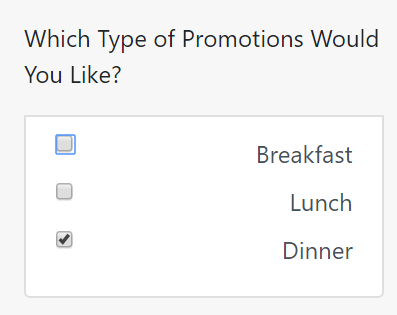
Each customer is unique. Don’t send the same message to everyone.
Connect with individual subscribers with information they want. This is why subscriber segmentation is important.
A restaurant open for breakfast, lunch and dinner has three unique customer types. Sending a lunch promotion to someone that works across town may not be useful. But a dinner special might.
This is why it is important to learn more about your subscribers than just their encrypted subscriber data.
This practice adds a layer of management to your marketing strategy but can pay high dividends. Instead of interrupting customers with offers they are not interested in seeing, you only send messages they are more likely to want.
This means they will have a higher level of satisfaction with their subscription and your messages will have a higher engagement rate and return on investment.
What Browsers and Platforms Support Push Notifications?
As of this writing the only modern browser without push notification support is Apple's Safari. Edge, Chrome, FireFox, Samsung Internet etc. all support native push notifications.
Beyond the browser Windows and Android both support push.
And if you are wondering if Edge, FireFox or Chrome on iOS support push, they don't. They are what we call pseudo browsers. Because of Apple policies they are not allowed to use their engines on iOS, they must use the same engine Safari uses. This means no push notifications.
You may also see some push service providers claim they can send push notifications on iOS. But they cannot. When you dig into what they offer it is often messages through another application, like Facebook Messenger, and not native push messages.
This is bad because now you have two layers of abstraction, Facebook and the platform. Either could disrupt your ability to communicate with customers.
Business Recommendations
Push is one channel to reach your customers with your brand and marketing messages. You can obviously promote specials and coupons, but don't forget important news, announcements and retargeting opportunities.
One key difference push messages offer over other messaging channels is a simpler to create and cheaper to send medium. Plus response rates are much higher than traditional messaging channels like email marketing.
We think push is a tool every business should leverage, but it is only one channel. It should be integrated with your overall marketing strategy.
Other channels your business should also utilize is SMS, email and even chatbots. An important thing to remember is you need to be accessible by customers in the channel they want to use. Push is one of those channels.
If you want to know more about how our chat service works please reach out to us. We make it available as part our custom web solutions and as a subscription-based service.





